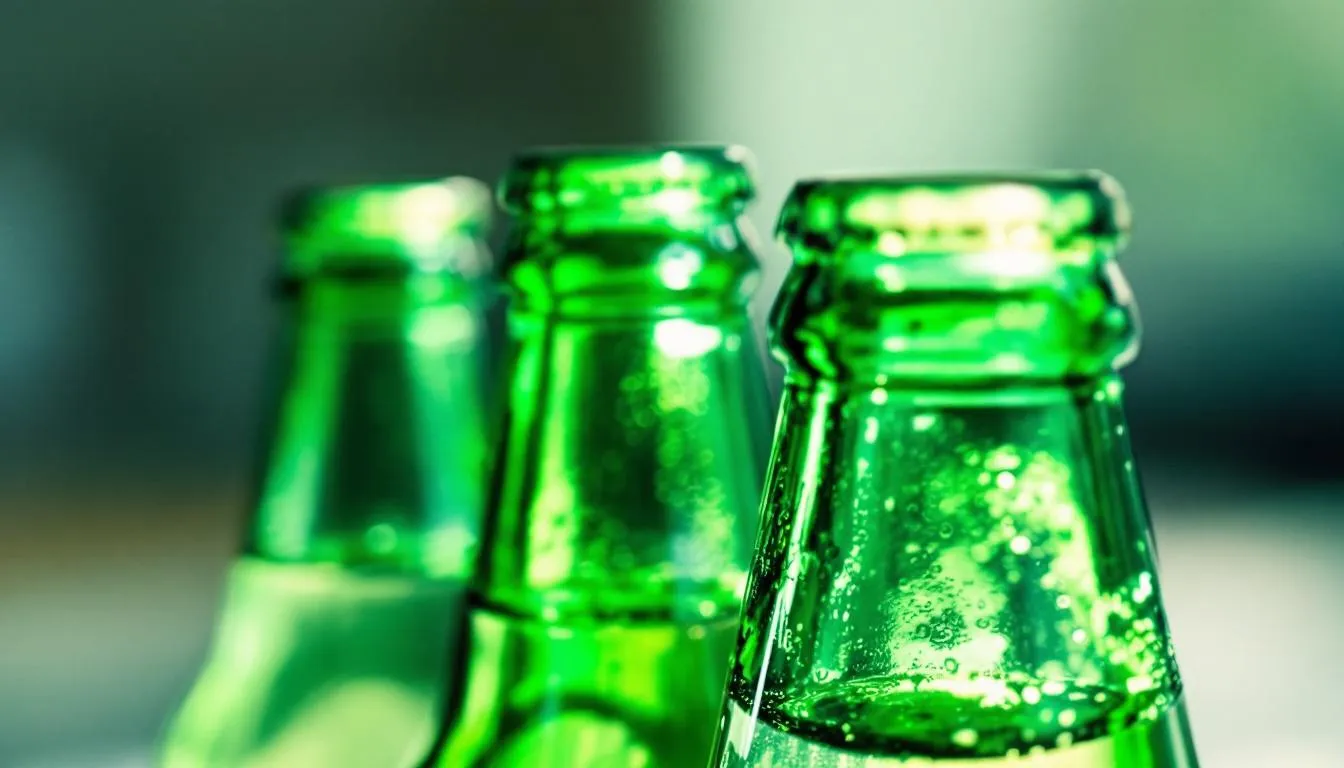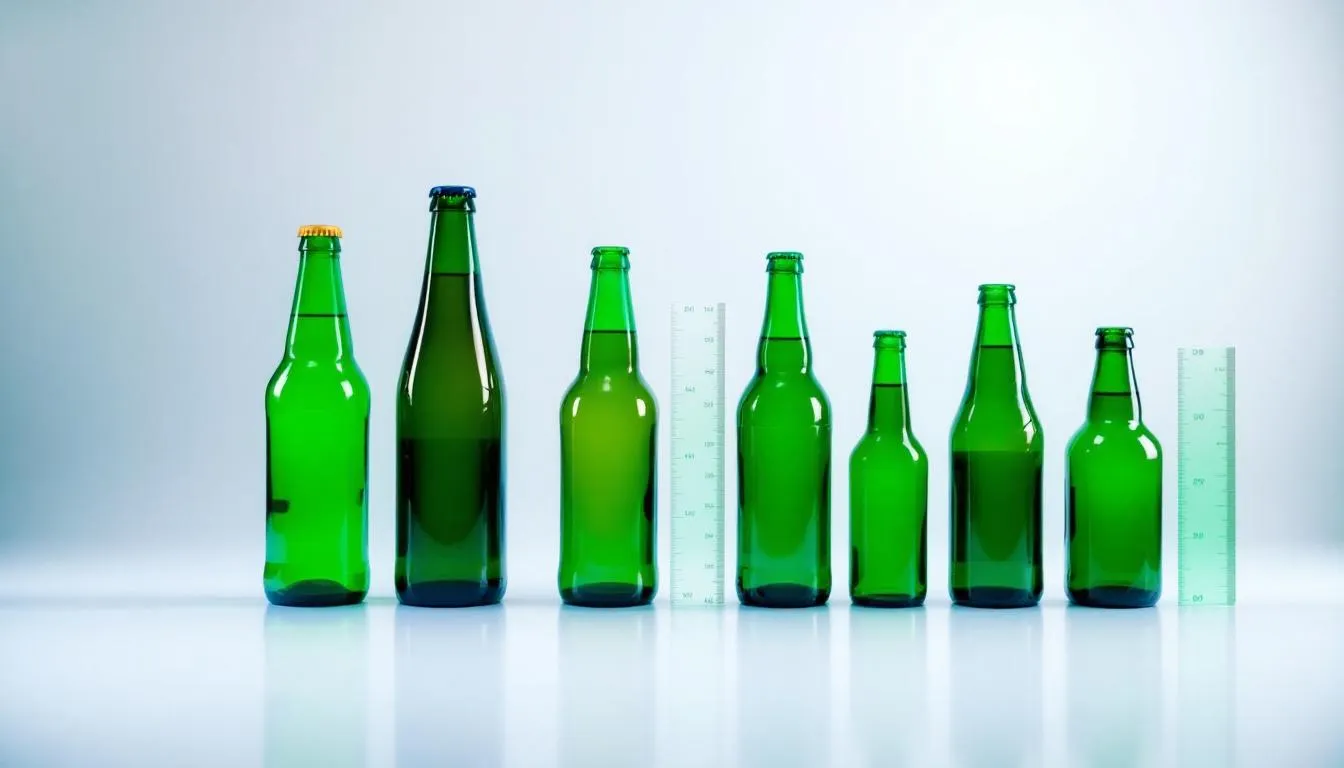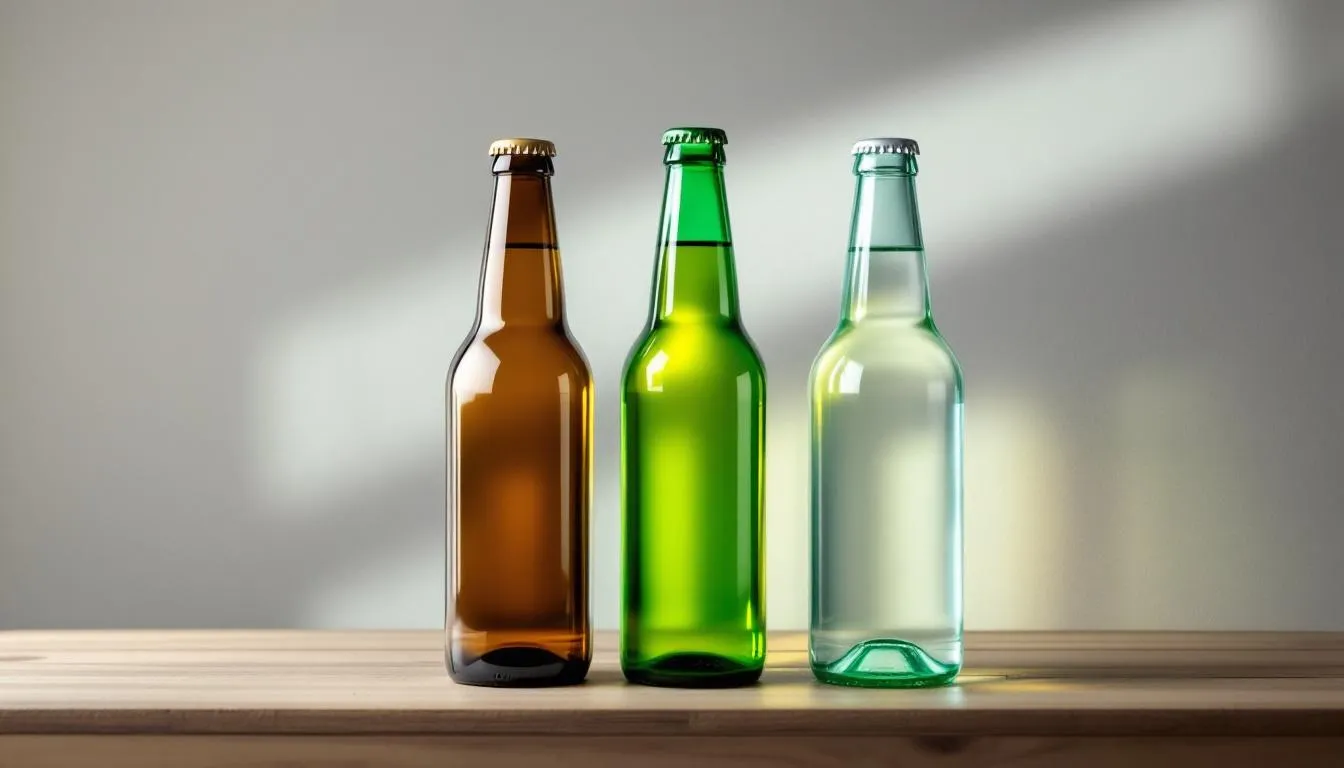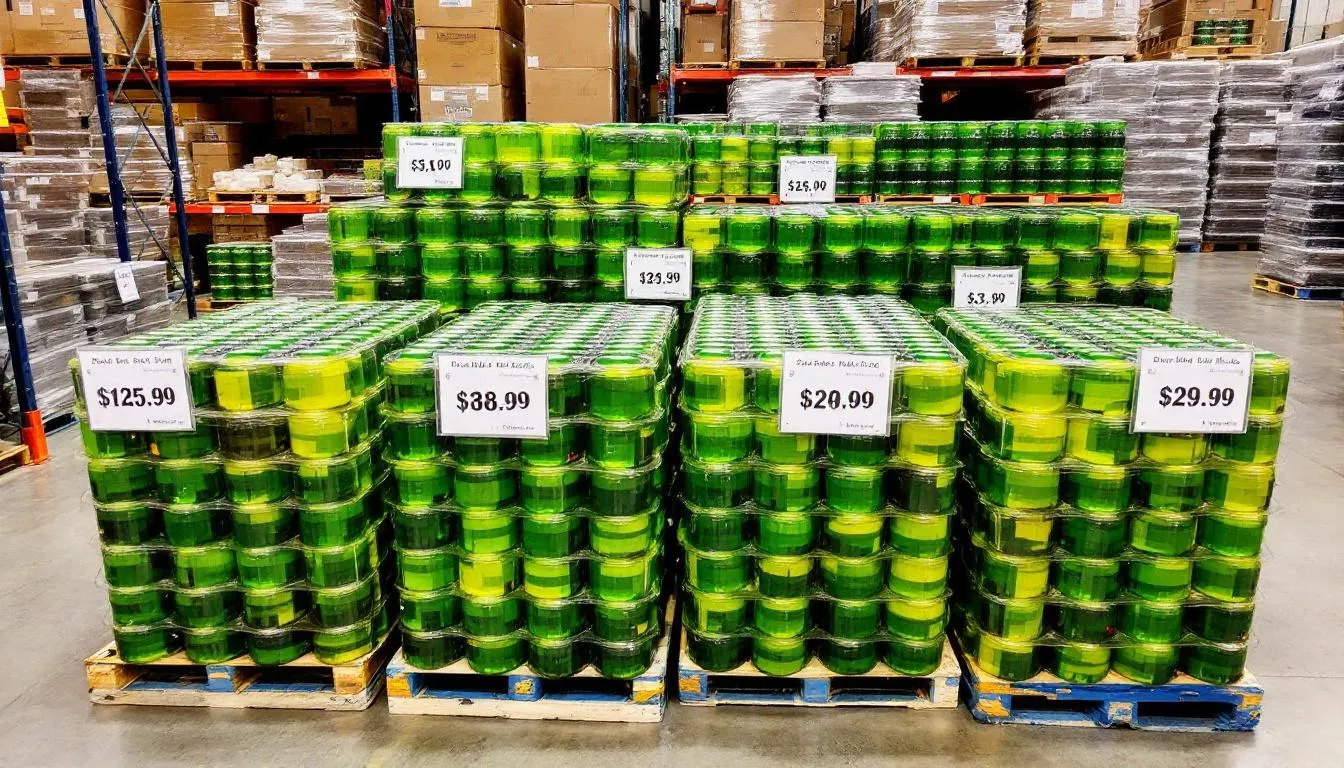When you think of premium beer brands, green beer bottles immediately come to mind. From Heineken’s iconic emerald glass to Beck’s distinctive packaging, green bottles have become synonymous with quality craft beer and international brewing excellence. But there’s much more to these emerald containers than meets the eye.
Green glass beer bottles represent a fascinating intersection of science, marketing, and brewing tradition. While they might not offer the ultimate protection that brown bottles provide, green bottles strike an ideal balance between functional light protection and memorable brand recognition. Whether you’re a home brewer looking to bottle your latest creation or simply curious about why your favorite beer comes in green glass, this comprehensive guide covers everything you need to know.
From the chemistry behind UV light protection to purchasing specifications for your own brewing projects, we’ll explore why green bottles remain a popular choice among brewers worldwide and how they continue to shape the beer industry today.
Why Beer Bottles Are Green

The choice to use green beer bottles isn’t arbitrary – it’s rooted in both science and strategic marketing decisions that have evolved over more than a century of brewing history.
UV Light Protection and Beer Quality
Green glass provides crucial light protection that preserves beer quality during storage and transportation. When exposed to UV light, hop compounds called isohumulones break down and create sulfur compounds that produce the dreaded “lightstruck” or skunky flavor that can ruin even the finest brew. Green bottles filter approximately 20% of harmful UV light, offering significantly better protection than clear glass while maintaining the visual appeal that brown bottles sometimes lack.
While brown bottles block around 98% of UV light compared to green glass, the moderate protection offered by green bottles proves sufficient for many beer styles, especially when combined with proper storage in dark conditions. This light protection becomes particularly important for hoppy beers like pilsner and ales, where hop character plays a central role in the intended flavor profile.
Marketing and Brand Distinction
Green bottles have become powerful marketing tools that help brands stand out on crowded store shelves. The distinctive emerald color immediately signals premium quality to consumers, particularly in markets where green bottles are associated with imported European beers. This visual distinction allows brewers to command higher prices and build stronger brand recognition compared to more common brown bottle alternatives.
Many breweries deliberately choose green glass specifically for its branding impact. The color conveys sophistication and international heritage, making it ideal for brands positioning themselves as premium or craft options in competitive markets.
Historical Significance in European Brewing
The tradition of green beer bottles dates back to the early 1900s when glass manufacturing technology made colored glass more accessible than pure clear glass. European breweries, particularly in Germany and the Netherlands, began adopting green bottles as both a practical solution and a way to distinguish their products from local competitors.
This historical foundation created lasting associations between green bottles and European brewing excellence that persist today. Many of the world’s most recognizable beer brands built their reputations using green glass, establishing traditions that span generations of beer drinkers.
Famous Beer Brands Using Green Bottles
The most successful beer brands using green bottles have leveraged this packaging choice to build global recognition and premium market positioning. These brands demonstrate how green glass can become an integral part of brand identity.
Heineken – The Global Green Bottle Leader
Heineken stands as the most iconic green bottle beer brand worldwide, holding an impressive 50% market share in the Netherlands and maintaining significant presence across international markets. Since 1873, this Dutch brewery has made green bottles central to its brand identity, making the emerald glass instantly recognizable to consumers globally.
The company’s commitment to green glass extends beyond mere tradition – it’s a strategic choice that reinforces Heineken’s positioning as a premium international lager. The distinctive bottle shape and green color have become so synonymous with the brand that consumers often refer to “green bottles” when ordering Heineken at bars and restaurants.
Beck’s Pilsener – German Heritage in Green Glass
Beck’s has utilized green bottles since 1873, making it one of the longest-running examples of green glass packaging in the beer industry. This German pilsener built its reputation on quality brewing traditions, with green bottles serving as a visual reminder of European craftsmanship and attention to detail.
The brand’s success demonstrates how green bottles can effectively communicate heritage and authenticity, particularly important factors for consumers seeking traditional European beer experiences.
Other Notable Green Bottle Brands
Carlsberg – This Danish brewery markets itself as “Probably the best beer in the world” and uses green bottles to reinforce its premium positioning across global markets.
Stella Artois – With over 600 years of brewing heritage, this Belgian beer leverages green glass to communicate its long-standing commitment to quality and tradition.
Grolsch – Founded in 1615, this Dutch brewery is famous for its distinctive swing-top green bottles that combine functional packaging with memorable visual appeal.
Rolling Rock – This American lager from Latrobe, Pennsylvania, uses green bottles to differentiate itself in the competitive domestic beer market.
Peroni Nastro Azzurro – This Italian pale lager has gained significant popularity in British markets, with green bottles helping establish its premium imported image.
Moosehead – Canada’s oldest operating brewery continues to use green glass packaging as part of its authentic Canadian heritage branding.
Tuborg – Owned by the Carlsberg group, this Danish brand maintains green bottle traditions across European and international markets.
Yuengling – America’s oldest brewery, operating since 1829, often uses green bottles for specific product lines, connecting modern brewing with historical traditions.
Green Beer Bottle Specifications and Sizes

Understanding green beer bottle specifications helps brewers, retailers, and consumers make informed decisions about packaging and purchasing. Standard green bottles come in several common sizes, each designed for specific market needs and consumption occasions.
Standard Size Options
330ml green beer bottles represent the most common size for European markets and craft brewing applications. These bottles provide ideal single-serving portions while offering sufficient space for proper carbonation and flavor development. The 330ml capacity strikes the perfect balance between reasonable pricing and satisfying consumption volume.
200ml green bottles work perfectly for sampling and specialty brews where smaller portions make sense. Craft breweries often use this size for high-alcohol content beers or expensive limited-edition releases where full-size bottles might be overwhelming for consumers.
500ml green bottles serve as larger format options ideal for sharing and premium products. These bottles work well for traditional European styles and special occasion beers where larger serving sizes enhance the drinking experience.
Technical Specifications
Most green beer bottles feature crown cap closures with standard 26mm opening diameters, ensuring compatibility with existing capping equipment across the brewing industry. The crown cap system provides reliable sealing that maintains carbonation and prevents contamination during storage and transportation.
Standard 330ml green bottles typically measure 226.9mm in height and 60.7mm in diameter, dimensions that fit comfortably in standard refrigeration units and display cases. These measurements also work well with existing bottling equipment used by commercial breweries and serious home brewing operations.
The smooth glass surface of green bottles provides ideal conditions for labeling and branding applications. The emerald color offers sufficient contrast for most label designs while maintaining the distinctive green appearance that consumers associate with premium beer products.
Green vs Brown vs Clear Beer Bottles

Choosing between green, brown, and clear beer bottles involves weighing functional protection against marketing considerations. Each option offers distinct advantages depending on brewery priorities and target market preferences.
Comprehensive Protection Comparison
Brown bottles provide superior UV protection compared to green glass, blocking approximately 98% of harmful UV light that can damage beer quality. This makes brown the preferred choice for many craft brewers who prioritize product integrity above all other considerations.
Green bottles filter around 20% of UV light, offering significant but limited protection compared to brown alternatives. While this protection level isn’t optimal, it proves sufficient for many beer styles when combined with proper storage practices and reasonably fast product turnover.
Clear bottles provide virtually no UV protection, making them unsuitable for beers with significant hop character or extended shelf life requirements. However, clear glass allows complete product visibility, which some breweries value for marketing purposes.
Cost and Production Considerations
The cost differences between green and brown glass production are minimal, with both options requiring similar raw materials and manufacturing processes. The choice between colors typically depends more on brand strategy than production economics.
Clear glass can sometimes cost slightly less to produce when using high cullet content (recycled glass), but this advantage disappears when factoring in the quality risks associated with inadequate light protection.
Brand Recognition Impact
Green bottles offer unique marketing advantages that brown bottles cannot match. The distinctive color helps brands stand out on retail shelves and creates memorable visual associations with quality and international heritage.
Craft brewers increasingly prefer cans or brown bottles for better beer preservation, but established brands with strong green bottle recognition often maintain their traditional packaging to preserve brand equity built over decades of market presence.
Light Protection Comparison Table
Bottle Color | UV Protection | Brand Appeal | Cost | Best Use Cases |
|---|---|---|---|---|
Brown | 98% | Traditional | Standard | Hoppy beers, long storage |
Green | 20% | Premium/Import | Standard | Brand recognition, moderate storage |
Clear | <5% | Product visibility | Slightly lower | Fast turnover, visual appeal |
The data clearly shows that while brown bottles offer superior technical performance, green bottles provide valuable marketing benefits that many breweries find worth the trade-off in protection.
Uses for Green Beer Bottles
Green beer bottles serve diverse applications across the brewing industry, from large commercial operations to small craft breweries and home brewing enthusiasts. Understanding these applications helps identify when green glass makes the most sense for specific brewing projects.
Home Brewing and Microbreweries
Home brewers often choose green bottles for distinctive product presentation that sets their creations apart from commercial alternatives. The emerald color immediately signals craft quality and attention to detail, making home-brewed gifts and special occasions more memorable.
Microbreweries use green bottles strategically to position their products as premium alternatives to mass-market beers. The visual impact of green glass helps justify higher pricing and builds brand recognition in competitive local markets.
Craft Beer Festivals and Artisan Markets
Green bottles prove particularly effective at craft beer festivals and artisan markets where visual appeal plays a crucial role in attracting customers. The distinctive color helps products stand out among dozens of competing options, drawing attention from potential customers browsing crowded vendor displays.
The premium associations with green glass also help craft brewers command higher prices at these events, where consumers expect to pay more for unique, high-quality products.
Specific Beer Styles
Fruit ciders, ales, and stouts often benefit from the moderate light protection offered by green bottles. These styles typically have robust flavors that can withstand minor light exposure while still benefiting from some UV filtering.
The green color complements the natural, artisanal image that many cider and ale producers want to project, making it an ideal packaging choice for these categories.
Commercial Applications
Restaurants and bars serving draft beer often use branded green bottles for take-home sales and special promotions. The bottles serve as effective marketing tools that customers associate with quality dining experiences.
Gift packaging and special edition releases frequently utilize green bottles to create premium presentations that justify higher pricing and enhance perceived value.
Green Beer vs Green Beer Bottles
This distinction often confuses consumers, particularly around St. Patrick’s Day when both green-colored beer and green bottles become more visible in the marketplace. Understanding the difference helps consumers make informed purchasing decisions.
Green Beer – Artificially Colored Beer
Green beer refers to regular beer that has been artificially colored green using food coloring, typically for St. Patrick’s Day celebrations. Common brands like Budweiser and Coors offer green-colored beer seasonally, creating festive drinks that appeal to holiday celebrants.
This green coloring is purely cosmetic and temporary, designed as a marketing strategy rather than a functional brewing choice. The food coloring doesn’t affect taste when properly applied, though some consumers report slight differences in mouthfeel.
Green Beer Bottles – Emerald Glass Packaging
Green beer bottles contain regular beer in emerald-colored glass packaging, with no artificial coloring added to the beer itself. The green color comes from the glass manufacturing process, where iron oxide and other compounds create the distinctive emerald hue.
There’s no taste difference between beer stored in green bottles versus other glass colors when the beer is properly stored away from direct light. The bottle color affects light protection and brand perception, not flavor.
Seasonal Marketing Considerations
The confusion between green beer and green beer bottles creates marketing opportunities around St. Patrick’s Day and other celebrations. Some breweries capitalize on this by promoting their green-bottled products during these periods, even though the beer inside isn’t artificially colored.
Understanding this distinction helps consumers choose products that match their preferences, whether they want artificially colored holiday beer or simply prefer the premium image associated with green bottle packaging.
Purchasing Green Beer Bottles

For brewers ready to purchase green beer bottles, understanding suppliers, pricing, and ordering requirements ensures successful procurement that meets both budget and quality requirements.
Supplier Options and Availability
Specialty packaging suppliers like Ampulla LTD and World of Bottles offer comprehensive selection of green beer bottles for commercial and home brewing applications. These suppliers typically stock multiple sizes and can provide additional services like custom labeling and branding consultation.
Many suppliers offer both single bottle purchases for small projects and pallet quantities for commercial operations. This flexibility accommodates everyone from hobbyist home brewers to established craft breweries planning major production runs.
Pricing Structure and Volume Discounts
Current pricing typically runs around £0.65 per 200ml bottle, with significant bulk discounts available for larger orders. The 330ml and 500ml sizes generally offer better per-volume value, making them more economical for breweries planning regular production schedules.
Minimum order quantities vary significantly between suppliers. Some accommodate single bottle orders for sampling and testing, while others require full pallets for commercial pricing. Understanding these requirements helps brewers plan purchases that balance cost efficiency with cash flow considerations.
Additional Equipment and Supplies
Crown caps are sold separately from bottles, available in gold or silver finishes that complement green glass aesthetically. Quality caps ensure proper sealing that maintains carbonation and prevents contamination during storage.
Capping equipment is required for proper sealing during the bottling process. Hand cappers work well for small batches, while commercial operations need pneumatic or electric capping machines that can handle higher volume production requirements.
Labeling and Branding Services
Many bottle suppliers offer labeling and branding services that help breweries create professional-looking products without investing in separate design and printing capabilities. These services can include custom label design, printing, and application.
The smooth surface of green bottles provides excellent adhesion for labels while offering sufficient contrast for most design elements. This makes green bottles particularly well-suited for breweries that want distinctive packaging without complex application requirements.
Quality Considerations
When purchasing green beer bottles, inspect samples for consistent color, proper dimensions, and absence of defects like chips or cracks. Quality bottles ensure reliable performance during filling, capping, and storage processes.
Verification successful waiting for consistent supplier quality helps establish long-term relationships that support ongoing brewing operations. Working with reputable suppliers reduces the risk of defective products that could compromise entire batches of finished beer.
The world of green beer bottles offers brewers unique opportunities to combine functional packaging with distinctive brand presentation. Whether you’re bottling your first home brew or scaling up a commercial operation, green glass provides the ideal balance of protection and premium appeal that helps products succeed in competitive markets.

Leave a Reply